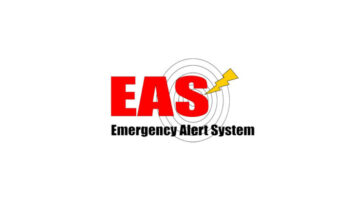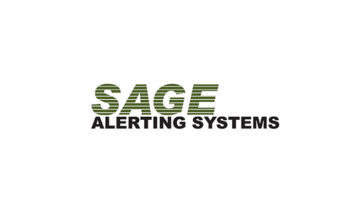In our previous column we discussed Ron Schacht’s inexpensive EAS receiver idea. Now I hear from Ken Beckwith that he is building and selling antennas to feed your EAS receiver.
We shared a do-it-yourself AM loop antenna several years ago, but many readers don’t have time for projects like that, and Ken has solved the problem by offering AM loop and VHF antennas for sale.
The AM version is an untuned shielded loop, based on a Motorola AM Stereo bulletin published in 1989. The antenna is weatherproof, made with PVC pipe.
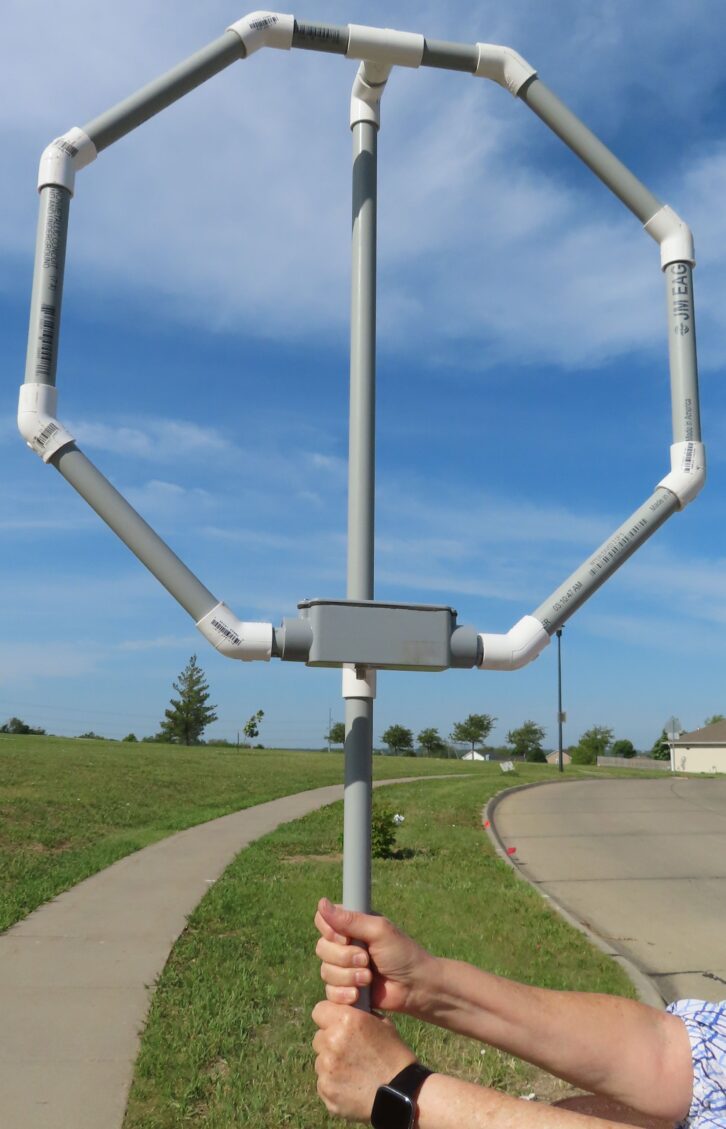
Because it is a loop antenna, it should be pointed parallel to the desired signal. There is a sharp null when the antenna is perpendicular to the received signal; this feature can be used to null out an offending signal.
The antenna output is an “F” connector, and 75-ohm coax can be used to connect to the receiver. Ken recommends inserting a lightning arrestor, available from Amazon, between the antenna and receiver input.
Depending on mounting hardware, prices for the loop version range from $135 to $180.
The VHF model is tuned to the weather band but is also capable of receiving FM broadcast signals. It was designed as a 2-meter amateur antenna by F.C. Judd, G2BCX, and is commonly known as a Slim Jim.
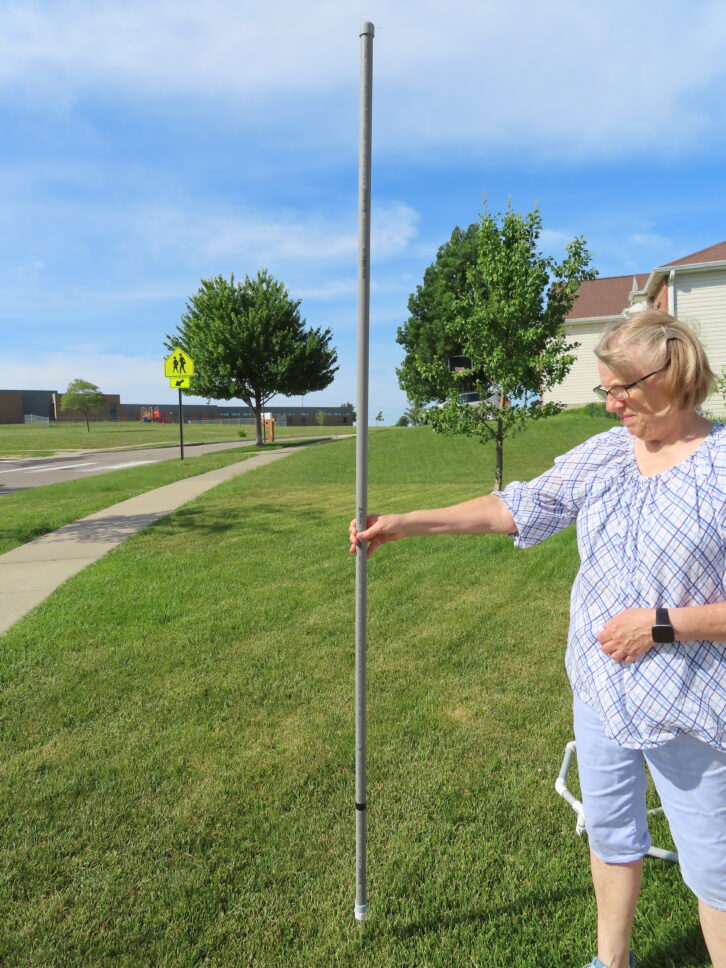
The antenna, shown in the second image, is vertically polarized. It has a very narrow angle of radiation, about 8 degrees toward the horizon. As such, it has a gain that exceeds that of a 1/4- or 5/8-wave antenna.
The feed is at the bottom, using an “F” connector, and you’ll use 75-ohm coax to connect antenna to receiver. Like the AM version, the VHF antenna can be opened for repair and is designed to be weatherproof. And like the AM version, it is available with several choices of mounting brackets.
It costs $105 to $150 depending on mounting choice.
For information or to order, contact Ken Beckwith at [email protected].
What’s on your plate?
Branding has taken over most radio studios, so what’s left to stick your logo on? How about the butt end of your microphones?
Dan Slentz found these nifty end plates, which can be screened with your logo and affixed to the rear of a Shure SM7 microphone. The plates screw in but are also available in a magnetic version for quick transfer. They cost about $25 and are available here.
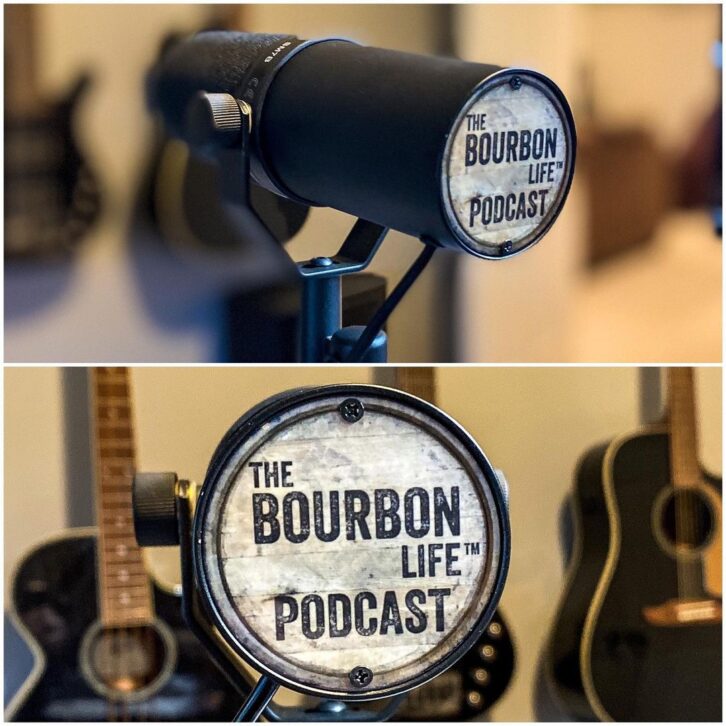
If you don’t need to promote your logo, how about numbering each mic in a busy studio setting, 1 through 4, so the board op knows which mic to switch on?
The ultimate multi-tool?
Leatherman is known for developing the multi-tool market. Its latest model is the ARC.
This substantial offering costs about $230 but provides a total of 20 tools in one, including a MagnaCut steel saw blade designed for wet or dry sawing; large and small bit drivers; wire cutters; scissors and plenty more.
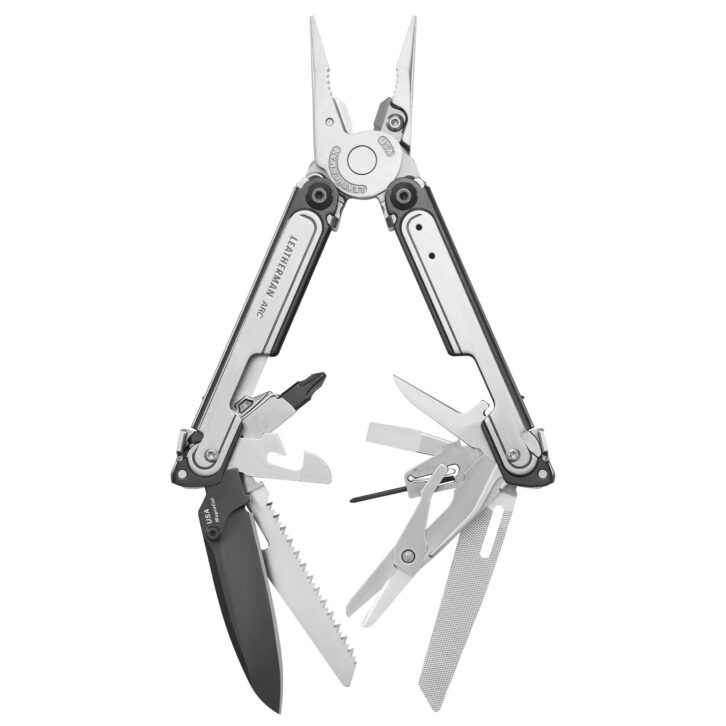
The design of the ARC places the fold-out tools on the outside of the chassis, so they can be selected without opening the jaws of the handle. The individual tools, including pliers, can be opened with one hand, and lock magnetically.
Do you know the story behind the company?
“While on a budget trip to Europe in 1975, Tim Leatherman and his wife Chau constantly came across leaky hotel plumbing and road-side fixes for their cranky Fiat,” its website tells us.
“Tim realized the need for a pliers-based multipurpose tool. ‘I was carrying a scout knife and used it for everything from slicing bread to fixing the car. But I kept wishing I had a pair of pliers!’ When Tim came back to the states, he took his ‘multi-tool’ idea and some sketches he made on the trip, and got to work. …
“From Tim’s first prototype to our latest multi-tool innovation, we’ve been building our tools in Portland, Ore. And when it’s time to put our tools through their paces, we test them in the great Pacific Northwest.”
The company opened in 1983. All of its tools have a 25-year warranty. Find the ARC here.
Makes sense
In August we told you about EEsensors.com and how these devices, designed for monitoring server room temperature and humidity, can help broadcast engineers. Faith Radio’s Wiely Boswell, CBRE, CBNE, says the tip from Dan Slentz has sparked a real interest in these and similar sensors. Workbench is all about sharing your expertise with colleagues!
Their pricing depends on what you want to monitor. EEsensors.com also offers an Internet of Things interface platform, should you have your own sensors to connect over the IoT.
Workbench submissions are encouraged and qualify for SBE recertification credit. Email [email protected].

